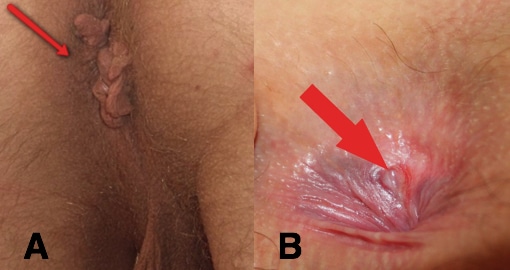Introduction
- Introduce yourself to the patient
- Wash your hands thoroughly
- Explain to the patient what the examination involves
- Make sure you reassure the patient you can stop if it becomes too painful at any point
- Ensure verbal consent is adequately obtained
- Request a chaperone
Preparation
- Put on apron and gloves
- Ask the patient to remove trousers and underwear
- Cover the patient with a blanket when appropriate to maintain dignity
- Position patient on their left side and bring their knees to their chest, positioning the buttocks at the edge of the couch
- Ensure there is adequate lighting available for good visibility during the examination
- Ask your chaperone to be on the other side of the coach, supporting the patient as they face away from you
Inspection
- Gently part the buttocks and expose the natal cleft
- Inspect the perianal area for:
- Skin disease (e.g. dermatitis) or skin tags
- Pilonidal sinus, anal fissures, or anal fistula
- External haemorrhoids
- Rectal prolapse
Palpation
- Lubricate your examination finger
- Press your finger by the posterior anal edge
- Note any anal fissures that can be felt here
- Gently insert your finger into the anal canal, following the natural curve of the sacrum
- Assess anal tone, also confirm by asking the patient to squeeze your finger
- Carefully rotate your finger to feel all walls of the rectum
- This is best done by pronating at the wrist
- In males, palpate the prostate on the anterior wall
- Withdraw the finger and inspect contents for stool, blood, or mucus
Completing the Examination
- Clean the patient with paper towel
- Ask the patient to re-dress
- Wash your hands
- Perform a gastrointestinal examination if indicated
Findings are usually described by convention of a clockface, with anterior as 12 o’clock and posterior as 6 o’clock

